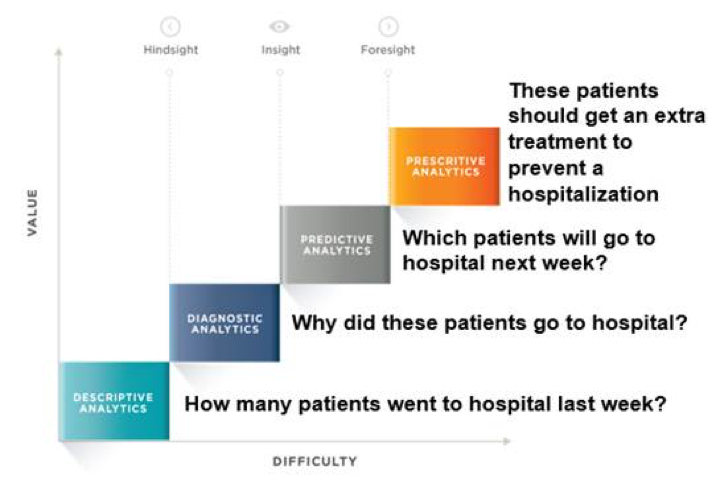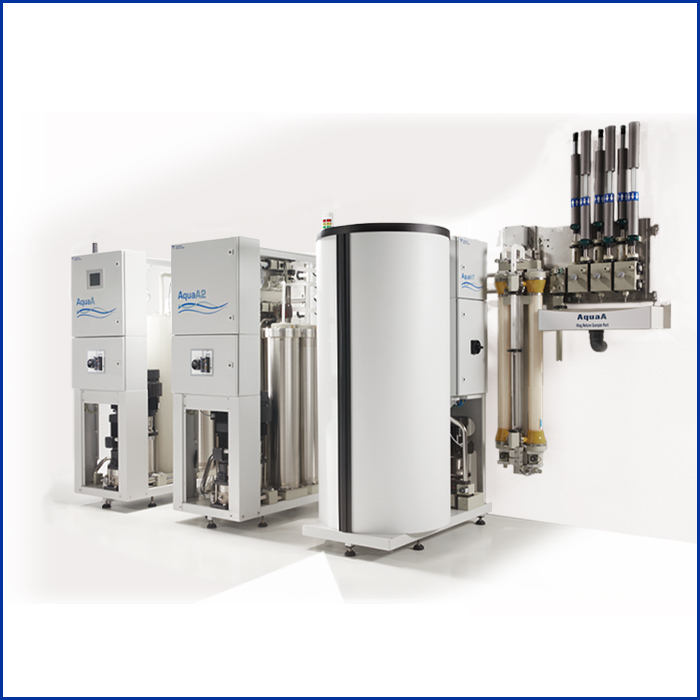4 Types of Healthcare Analytics to Use in Your Practice
In their career, nephrologists may treat hundreds to thousands of patients with end stage renal disease (ESRD). At Fresenius Medical Care North America, we have collected data on over 1 million ESRD patients. For those patients, we have data from every treatment, every lab, every medication and every assessment, resulting in over 4 petabytes of data—that’s over 1 million gigabytes of de-identified secured patient data. Imagine that we wanted to find the data from a historical patient who most closely matches the patient currently sitting in the dialysis clinic to inform the best precise personalized treatment. The amount of data at Fresenius Medical Care North America is too large for any clinician, nurse, dietitian, social worker, or technician to search. That is where healthcare analytics can help. Healthcare analytics can be defined as applying mathematical tools to large amounts of data to inform decisions that help improve care for every patient. In this article, we will review the main types of healthcare analytics and how they can be used to improve the nephrologist's practice.
Healthcare analytics is a continuum ranging from traditional to more advanced techniques:

In general, we can divide analytics into four main categories of increasing difficulty:
- Descriptive
- Diagnostic
- Predictive
- Prescriptive

Source: Adapted from “4 Stages Of Data Analytics Maturity: Challenging Gartner's Model”1
Descriptive analytics allows us to understand what happened historically and answer questions such as:
- How many patients were hospitalized last week?
- What percent of patients dropped home therapy in the last month?
- What are the average bone mineral metabolism (BMM) laboratory values for the patient population?
These types of questions can be answered by looking at historical data and using simple statistical measures such as counts, percentages, averages, and standard deviation. In general, these descriptive analytical measures can be tracked over time to see if a practice is meeting its goals.
Diagnostic analytics allows us to understand why it happened and answer questions such as:
- Why did these patients go to the hospital last week?
- Why did patients leave home therapy?
- Why do patients not meet BMM targets?
These types of questions allow us to dig into the data a bit more, usually to understand or explain the answers found in descriptive analytics. For example, if we are trying to grow our home therapy program, we may discover from descriptive analytics that 10 percent of the population drops each month. The next logical question is why these patients dropped. In diagnostic analytics, we investigate the discharge reasons and measure the distribution of categories such as peritonitis, partner burnout, psychosocial issues, etc., by using statistical techniques to understand those reasons. As in descriptive analytics, diagnostic analytics involves an investigation of historical data.
Predictive analytics allows us to understand what will happen, creating predictions such as:
- Which patients will have the highest risk of hospitalization next week
- Which patients are likely to switch from home therapy to in center next month
- Next month's BMM values for each patient
In predictive analytics, data scientists use historical data to train models to predict future events by employing advanced computational techniques such as machine learning. These models can take advantage of thousands of data elements in the electronic record for each patient and identify patterns from all patients in the database. By using predictive models, we can calculate risk scores for each patient and identify which patients may need additional attention. However, predictive analytics does not indicate how to prevent adverse events such as a hospitalization.
Prescriptive analytics allows us to understand what actions are needed to change the prediction, as in the following examples:
- An extra treatment may help prevent the predicted fluid overload admission for this patient
- A home visit from a social worker may help prevent home therapy discharge for this patient
- A different BMM therapy may help this patient with medication adherence issues
We can dig into predictive analytics to understand the factors that drive each model. By determining which factors can be changed to lower the score, we can start to create prescriptive interventions that will lead to better outcomes. Prescriptive analytics is the most advanced healthcare analytic because it allows us to make specific recommendations on patient care delivery interventions. Prescriptive analytics may concern the clinical community in that a machine is making medical decisions. However, healthcare analytics, specifically predictive modeling, is just a tool that clinical staff can use to improve efficiency and efficacy. In fact, studies show that the combination of human and machine works better than either one by itself.2
In summary, healthcare analytics is a tool that can be used to answer many questions about patients in a data-driven manner.
References
- 4 Stages Of Data Analytics Maturity: Challenging Gartner's Model. Available at: https://www.linkedin.com/pulse/4-stages-data-analytics-maturity-challenging-gartners-taras-kaduk/, accessed January 30, 2018.
- Combining Human and Machine Intelligence for Making Predictions. Available at: http://cci.mit.edu/publications/CCIwp2011-02.pdf, accessed January 30, 2018.



